Ansible 是由 RedHat 赞助的开源免费自动化工具。使用 Ansible,我们可以管理和配置 Linux 和 Windows 系统,而无需安装任何代理。它基本上可以在 SSH 协议上使用,并且可以一次配置数百台服务器。在 Ansible 术语中,安装 Ansible 的系统称为控制主机/节点,而由 Ansible 管理的系统称为托管主机。
在这篇文章中,我们将讨论如何在 Rocky Linux 8 上安装最新版本的 Ansible。
实验准备
- Control Node – 192.168.1.170 – Minimal Rocky Linux 8
- Managed Host 1 – 192.168.1.121 – Ubuntu 20.04 LTS
- Managed Host 2 – 192.168.1.122 – Rocky Linux 8
- sysops user with admin rights
安装 Ansible
1) 更新系统
要更新 rocky linux 8,请运行 dnf 命令
$ sudo dnf update -y重启系统
$ sudo reboot2) 配置 EPEL 存储库
Ansible 包及其依赖项在默认的 Rocky Linux 8 包存储库中不可用。因此,要通过 dnf 安装 ansible,我们必须先配置 EPEL 存储库。
$ sudo dnf install -y epel-release3) 安装 Ansible
$ sudo dnf install ansible -y查看 Ansible 版本
$ ansible --versionpip 方式安装 Ansible
如果您正在寻找 Ansible 的最新版本,那么请使用 pip 安装 Ansible。
1) 安装所有更新
$ sudo dnf update -y重启系统
$ reboot2) 安装 python 3.8 和其他依赖项
$ sudo dnf module -y install python38
$ sudo alternatives --config python键入 3 并按 enter 键
3) 安装 Ansible
$ sudo pip3 install setuptools-rust wheel
$ sudo pip3 install --upgrade pip
$ sudo python -m pip install ansibleAnsible 安装成功
查看 Ansible 版本
$ ansible --version验证 Ansible
Whenever Ansible is installed with dnf or yum command then it’s default configuration file ‘ansible.cfg’ is created automatically under ‘/etc/ansible’ folder. But when we install it with pip then we have to create its configuration file manually.
每当使用 dnf 或 yum 命令安装 Ansible 时,就会自动创建 /etc/ansible/ansible.cfg 文件,当我们使用 pip 安装时,我们必须手动创建其配置文件。
It is recommended to create ansible.cfg for each project. For the
demonstration purpose, I am creating an automation project. Run
following mkdir command,
建议为每个项目创建独立的 ansible.cfg,本文中我创建了一个自动化项目。
$ mkdir automation
$ cd automation创建 ansible.cfg 文件,包含以下内容
$ vi ansible.cfg
[defaults]
inventory = /home/sysops/auotmation/inventory
remote_user = sysops
host_key_checking = False
[privilege_escalation]
become=True
become_method=sudo
become_user=root
become_ask_pass=False保存并退出文件
在 automation 目录下创建一个 inventory 文件,包含以下内容
$ vi inventory
[prod]
192.168.1.121
[test]
192.168.1.122保存并关闭文件
在 ansible.cfg 文件中,我已经使用 sysops 作为 remote_user,因此让我们为 sysops 用户创建 ssh 密钥,并在托管主机之间共享它。
$ ssh-keygen使用 ssh-copy-id 命令共享 SSH 密钥
$ ssh-copy-id sysops@192.168.1.121
$ ssh-copy-id sysops@192.168.1.122在所有的托管主机上执行以下命令
# echo "sysops ALL=(ALL) NOPASSWD:ALL" > /etc/sudoers.d/sysops使用 ping 模块验证控制节点到托管主机的连通性
$ cd automation/
$ ansible -i inventory all -m ping让我们创建一个剧本 (web.yaml) 在托管主机上安装 nginx 和 php
$ vi web.yaml
---
- name: Play to Packages
hosts:
- test
- prod
tasks:
- name: Install php and nginx
package:
name:
- php
- nginx
state: present保存并关闭文件
使用下面的 ansible-playbook 命令运行剧本
$ ansible-playbook -i inventory web.yaml很好,以上输出确认 playbook 已经成功执行,它也确认 Ansible 安装正确。

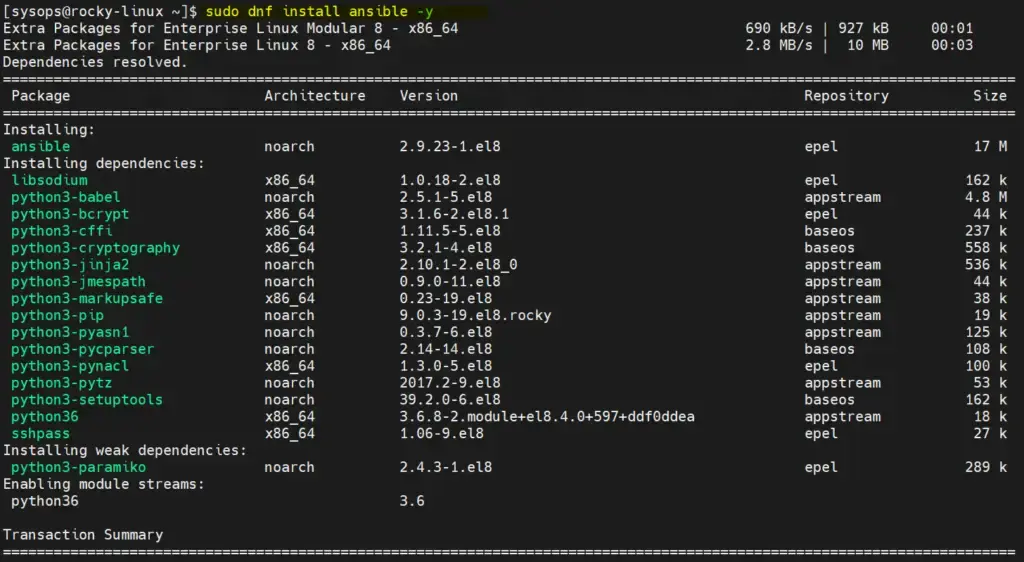

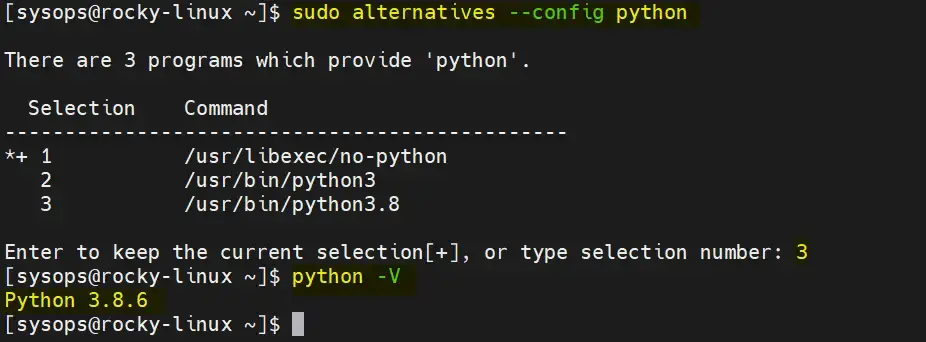



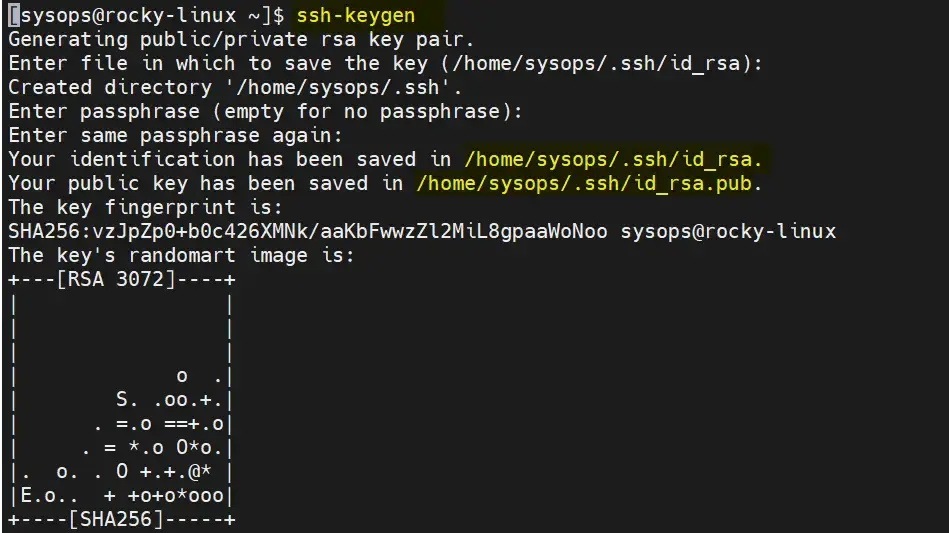
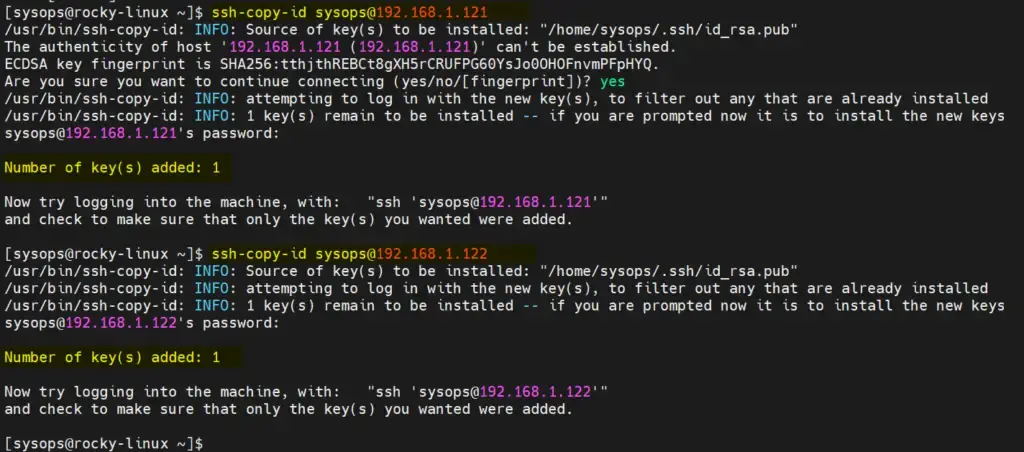
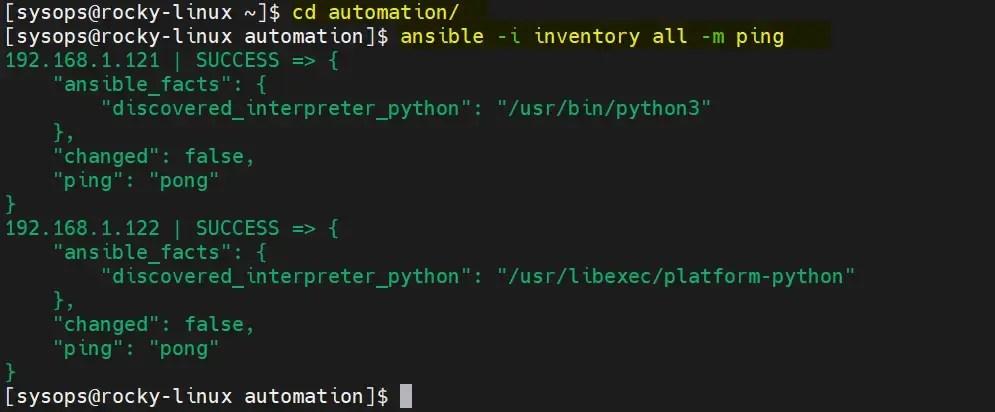

**粗体** _斜体_ [链接](http://example.com) `代码` - 列表 > 引用。你还可以使用@来通知其他用户。